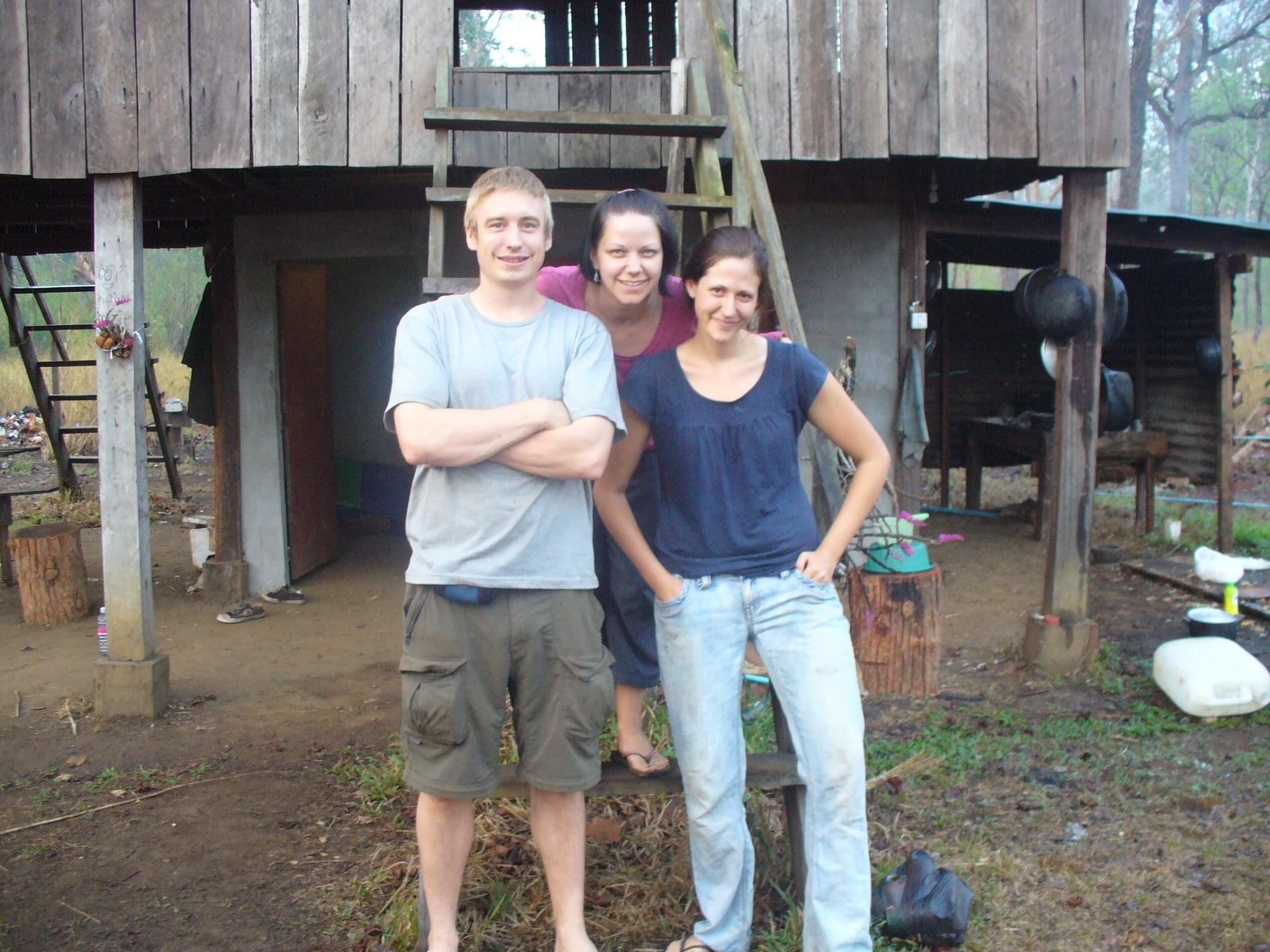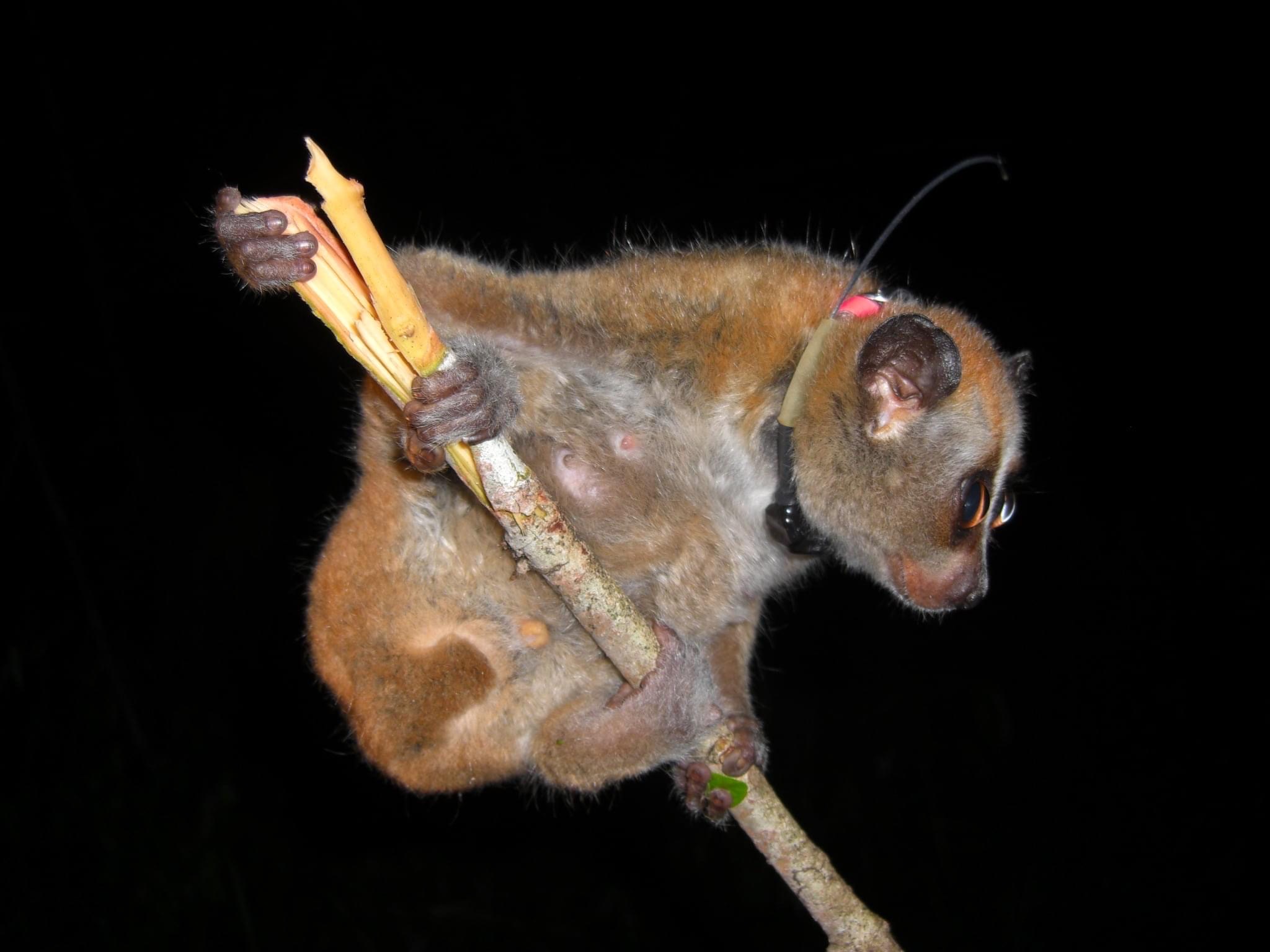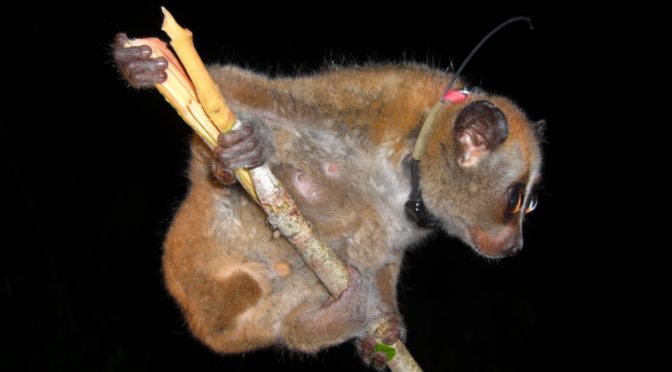This week, our paper announcing a name for a new genus for the pygmy loris, formerly Nycticebus pygmaeus, has been published in Zoosystematics and Evolution. The paper, entitled “A new genus name for pygmy lorises, Xanthonycticebus gen. nov. (Mammalia, Primates)”, written by myself and Vincent Nijman, highlights multiple differences between pygmy lorises and other lorises. Most noteworthy is the extensive genetic divergence time at some 10.5 million years ago, which is nearly double the time in many existing primate genera including Semnopithecus and Trachypithecus langurs, Mico and Cebuella marmosets, and of course Pan chimpanzees and our own genus Homo. Here I reflect on the evolution of our decision to publish this paper and what it could mean for recognition of further diversity within lorisids and their conservation.
I am incredibly lucky to have seen almost all of the recognised species of Asian lorises, both slow and slender, as well as two species of African potto, in the wild, as well as several species of galago. Having conducted my PhD on slender lorises, those tiny lorises always struck me as more galago-like. After a brief foray in Indonesia, I moved to work with Bengal slow lorises. My initial thoughts were that they were so large, it seemed strange for them to move like a loris at all! But the difference between slow and slender loris was great. Slender lorises are louder, more frenetic, and more determined in their movements. When I saw pottos for the first time, they really did not bring a loris to my mind at all other than their shape. They moved very differently, much more slowly, and one just got the feeling of them being different, just as one would identifying a lion from a tiger. When I went to Cambodia to work with Carly Starr on a long-term study of pygmy lorises, I had the same feeling – pygmy lorises were just different! Neither slow nor slender, they were even more social, faster, louder, and dare I say far less pretty!! Moving on to Vietnam, I could see Bengal and pygmy lorises again. Although the Bengals were Bengal-like and the pygmies had that different je ne sais quoi, Vietnamese Bengals looked nothing like Indian or Thai Bengals and the pygmies in Vietnam had the cute factor that the doggy-like Cambodian pygmies lacked.

Oddly enough, the topic of cute vs doggy-like pygmy lorises was brought up again by a trader of the species in Japan. This trader, who claimed to legally breed pygmy lorises, said he needed to find the “cute ones” since his clients don’t like the pointy dog-faced ones. He tried to source his lorises from regions of Vietnam, where he felt the cuter ones were native to. Interestingly too, some researchers who saw my photos from Cambodia did not really recognise those lorises as pygmy lorises. Despite their phenotypic differences, however, all pygmy lorises share their unique ability to have twins almost regularly; a faster locomotion and a seasonal change in the full colour of their coats with loss of dorsal stripe. Not to mention a number of morphometric features that characterise them, separating them from slow and slender lorises, including a protruding premaxilla, hairless ears, black nose and a unique chromosomal arrangement.

All of this diversity within lorises felt very confusing. Every week I am sent photos of lorises to identify, and when scrutinising their facial patterns, their fluffiness, their limb proportions, their snout lengths, it is evident that there is huge variability within this group. But unlike the macaques, langurs, gibbons and leaf monkeys that share the huge geographic range of slow lorises, no one has managed to do a proper genetic study to look at loris diversity. This is partly because it is difficult to catch them in the wild, to export samples, and that many samples come from confiscated individuals with unknown geographic origins. Furthermore, so many “well meaning” rescue centres and even research projects have reintroduced and translocated lorises to so many areas, that what is wild or endemic is a question that will always now affect any discussion of loris taxonomy.

Back in 2011, knowing the difficulty of exporting samples, being very curious about this question of diversity, and having been awarded an Oxford Brookes Excellence in Research Award, I visited genetics expert Dr Christian Roos to discuss a taxonomy manuscript on lorises. This evolved into a later paper in the Zoological Journal of the Linnaean Society where we pointed out, as the title suggests, that the remarkable ancient divergence amongst neglected lorisiform primates suggests much more taxonomic diversity within this group. Originally in this paper, we had the intention of naming the new pygmy loris genus, as well as a new genus of dwarf galago, but conservatively decided not to do so, although in the manuscript we point out that this could be the case. The new genus of galago, however, was finally announced two years after the publication of the Linnaean Society article, whereas the new genus of loris was left on the side-lines. In the meantime, we were able to name several new species of loris from Borneo; a new subspecies from Tioman has been announced; and incredible variation has been detected in confiscated Bengal slow lorises in Thailand. I was also the lead author on all of the new IUCN Red List classifications for lorises. Even as one species and one genus, it became evident that the mainland Asian lorises were under more threat than ever, with pygmy lorises reaching the criteria to be classed as Endangered. Despite threats, frankly ridiculous translocation events continue to occur, including releasing hundreds of non-native pygmy lorises into Thailand, and strangely, despite the scientific community’s willingness to accept new species of just about any monkey or ape, the lorises remain taxonomically conservative.
With all of that in mind, we finally decided to direct energies into the new genus paper. Pygmy lorises do indeed represent a lineage more anciently diverged than many lemurs, many monkeys and of course as noted above, apes. I resurrected an email I wrote to my Latin and Greek speaking colleague back in 2011 when we first planned to name this new genus. I had told her several of the characteristics of pygmy lorises. For me, one of the most striking characteristics is their golden reddish colour as compared to the other lorises. With Xantho being an apt prefix for this trait, as well as being a very cool sounding name, Xanthonycticebus was born.

We very much hope that the publication of this work will inspire others to look more deeply into the much-neglected taxonomy of this primate group with a huge geographic distribution, yet also being a group of primates that are geographically restricted due to their unique locomotion, inability to cross gaps, and ancient arrival in their current range. With forest loss, illegal trade as medicines and pets, and the pet aspect still being fuelled by social media, the more we understand the taxonomy of the lorises, the more we can highlight their threats and ultimately save them from extinction.
Written by Prof Anna Nekaris

